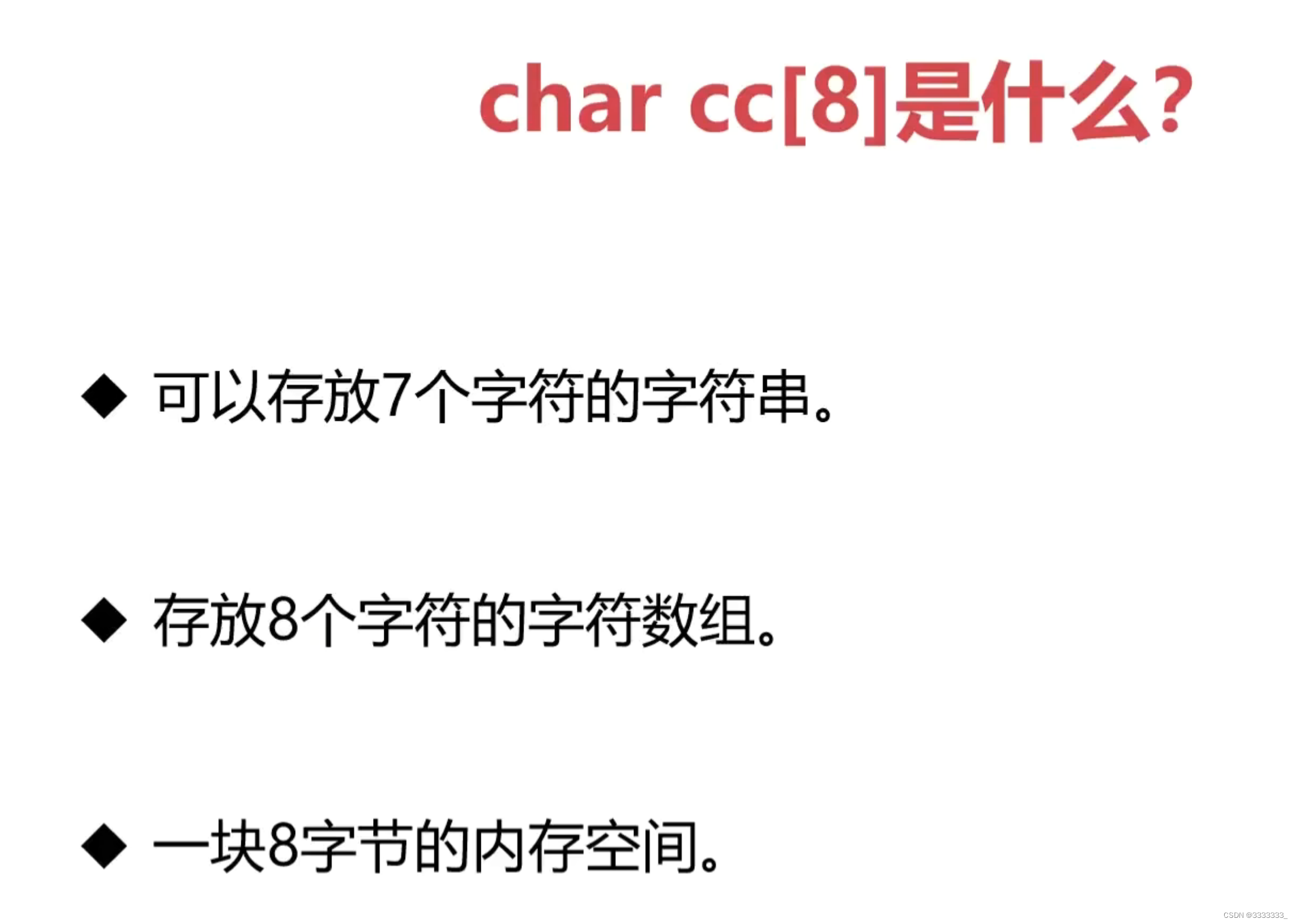
一、构造和析构
静态常量成员 string::npos为字符串数组的最大长度(通常是unsigned int的最大值);
NBTS(null-terminated string):C风格的字符串(以字符串0结束的字符串)
#include <iostream>
using namespace std;
void test()
{
cout << "npos=" << string::npos << endl;
string s;
cout << s.capacity() << " " << s.size() << endl;
cout << "容器动态数组的首地址=" << (void *)s.c_str() << endl;
s = "sssssssssssssssssssssssss";
cout << s.capacity() << " " << s.size() << endl;
cout << "容器动态数组的首地址=" << (void *)s.c_str() << endl;
/* 上面代码输出结果:
15 0
容器动态数组的首地址=0x61fdd0
30 25
容器动态数组的首地址=0xf71760 */
//可以看出,两个数组的首地址不一样,string类扩展容器的时候,
// 先分配更大的空间,然后把内容复制到型的空间,再把以前的空间释放掉
// 2)string(const char *s):将string对象初始化为s指向的NBTS(转换函数)。
string s2("hello world");
cout << "s2=" << s2 << endl; // 将输出s2=hello world
string s3 = "hello world"; //一个参数的构造函数可以用于转换函数,所以上面的方法等同于下面的代码
cout << "s3=" << s3 << endl; // 将输出s3=hello world
// 3)string(const string & str):将string对象初始化为str(拷贝构造函数)。
string s4(s3); // s3 = "hello world";
cout << "s4=" << s4 << endl; // 将输出s4=hello world
string s5 = s3;
cout << "s5=" << s5 << endl; // 将输出s5=hello world
// 4)string(const char* s, size_t n):将string对象初始化为s指向的NBTS的前n个字符,即使超过了NBTS结尾。
string s6("hello world", 5);
cout << "s6=" << s6 << endl; // 将输出s6=hello
cout << "s6.capacity()=" << s6.capacity() << endl; // 返回当前容量,可以存放字符的总数。
cout << "s6.size()=" << s6.size() << endl; // 返回容器中数据的大小。
//从"hello world"位置开始复制后面50个字节的内容.
string s7("hello world", 50);
cout << "s7=" << s7 << endl; // 将输出s7=hello world未知内容
cout << "s7.capacity()=" << s7.capacity() << endl; // 返回当前容量,可以存放字符的总数。
cout << "s7.size()=" << s7.size() << endl; // 返回容器中数据的大小。
// 5)string(const string & str, size_t pos = 0, size_t n = npos):
// 将string对象初始化为str从位置pos开始到结尾的字符,或从位置pos开始的n个字符。
string s8(s3, 3, 5); // s3 = "hello world";
cout << "s8=" << s8 << endl; // 将输出s8=lo wo
string s9(s3, 3);
cout << "s9=" << s9 << endl; // 将输出s9=lo world
cout << "s9.capacity()=" << s9.capacity() << endl; // 返回当前容量,可以存放字符的总数。
cout << "s9.size()=" << s9.size() << endl; // 返回容器中数据的大小。
string s10("hello world", 3, 5);
cout << "s10=" << s10 << endl; // 将输出s10=lo wo
string s11("hello world", 3); // 注意:不会用构造函数5),而是用构造函数4)
cout << "s11=" << s11 << endl; // 将输出s11=hel
// 6)template<class T> string(T begin, T end):将string对象初始化为区间[begin, end]内的字符,
// 其中begin和end的行为就像指针,用于指定位置,范围包括begin在内,但不包括end。
string s15(s3.begin(), s3.end() - 3);
cout << "s15=" << s15 << endl; // s12=hello wo
// 7)string(size_t n, char c):创建一个由n个字符c组成的string对象。
string s12(8, 'x');
cout << "s12=" << s12 << endl; // 将输出s12=xxxxxxxx
cout << "s12.capacity()=" << s12.capacity() << endl; // s12.capacity()=15
cout << "s12.size()=" << s12.size() << endl; // s12.size()=8
string s13(30, 0);
cout << "s13=" << s13 << endl; // 将输出s13=
cout << "s13.capacity()=" << s13.capacity() << endl; // s13.capacity()=31
cout << "s13.size()=" << s13.size() << endl; // s12.size()=30
string s14(30, '0');
cout << "s14=" << s14 << endl; // 将输出s14=000000000000000000000000000000
}
int main()
{
test();
return 0;
}shrink_to_fit
#include <iostream>
using namespace std;
void test()
{
string a;
cout << a.capacity() << " " << a.length() << " " << a.size() << endl;
a = "xxxxxxxxxxxxxxxxxxxxx";
cout << a.capacity() << " " << a.length() << " " << a.size() << endl;
a.shrink_to_fit();
cout << a.capacity() << " " << a.length() << " " << a.size() << endl;
}
int main()
{
test();
return 0;
}
15 0 0
30 21 21
21 21 21string容器-设计目标

计算机的内存就是一块空间,没有数据类型的说法。数据类型时编程语言中的概念,指出了操作内存中的数据的方法。
#include <iostream>
#include <cstring>
using namespace std;
void test()
{
char cc[8]; //在栈上分配8字节的内存空间
//把cc的内存空间用于字符串
//把cc的内存空间用于int型整数
int *a, *b;
a = (int *)cc;
b = (int *)cc + 1;
cout << (long long)a << endl;
cout << (long long)b << endl;
*a = 1999;
*b = 2222;
cout << "*a=" << *a << endl;
cout << "*b=" << *b << endl;
//把cc的内存空间用于double
double *d = (double *)cc;
*d = 333.222;
cout << "*d=" << *d << endl;
//把cc的内存空间用于结构体
struct stt
{
int a;
char b[4];
} * st;
st = (struct stt *)&cc;
st->a = 111;
/* strcpy(st->b, "abcd"); //如果是这样,不会报错,但是输出为:
st->a=6821633 这个值每次都变,不知道指向了哪里
st->b= 打印出来为空*/
strcpy(st->b, "abc");
cout << "st->a=" << st->a << endl;
cout << "st->b=" << st->b << endl;
// void * malloc(size_t size)
// char *cc1 = (char *)malloc(8);
// int *cc1 = (int *)malloc(8);
}
int main()
{
test();
return 0;
}
6421952
6421956
*a=1999
*b=2222
*d=333.222
st->a=111
st->b=abc
size()==8的string对象时什么意思?
长度为8的字符串,这么理解太狭隘了,
应该说是已使用了8字节的内存空间。
string对象是以字节为嘴小存储单元的动态顺序容器。
主要有两种用途
1 用于存放字符串(不存空字符0,空字符0是C风格字符串特有的)
2 用于存放数据的内存空间(缓冲区)
在实际开发中,最常见的是用作缓冲区。
string内部的三个指针
cahr *start_; //动态分配内存块开始的地址.
cahr *end_; //动态分配内存块最后的地址.
cahr *finish_; //已使用空间的最后的地址有这3个指针,所以 用它存放字符串的时候,不需要空字符0
字符串的长度用finish-start就出来了
#include <iostream>
using namespace std;
void test()
{
string s1 = "111111111111111"; //不交换动态数组地址
string s2 = "222222222222222"; //不交换动态数组地址
// string s1 = "111111111111111";//交换动态数组地址
// string s2 = "222222222222222";//交换动态数组地址
cout << "s1的内容:" << s1 << endl;
cout << "s2的内容:" << s2 << endl;
cout << "s1动态数据的地址:" << (void *)s1.data() << endl;
cout << "s2动态数据的地址:" << (void *)s2.data() << endl;
s1.swap(s2);
cout << "交换后" << endl;
cout << "s1的内容:" << s1 << endl;
cout << "s2的内容:" << s2 << endl;
cout << "s1动态数据的地址:" << (void *)s1.data() << endl;
cout << "s2动态数据的地址:" << (void *)s2.data() << endl;
}
int main()
{
test();
return 0;
}
/* s1的内容:111111111111111
s2的内容:222222222222222
s1动态数据的地址:0x61fdc0
s2动态数据的地址:0x61fda0
交换后
s1的内容:222222222222222
s2的内容:111111111111111
s1动态数据的地址:0x61fdc0
s2动态数据的地址:0x61fda0
s1的内容:1111111111111111
s2的内容:2222222222222222
s1动态数据的地址:0x761760
s2动态数据的地址:0x761780
交换后
s1的内容:2222222222222222
s2的内容:1111111111111111
s1动态数据的地址:0x761780
s2动态数据的地址:0x761760 */





















 829
829











 被折叠的 条评论
为什么被折叠?
被折叠的 条评论
为什么被折叠?








